| View previous topic :: View next topic |
| Author |
Message |
cooltouch


Joined: 15 Jan 2009
Posts: 9097
Location: Houston, Texas
|
 Posted: Thu Jan 29, 2015 1:45 am Post subject: 17mm Comparison: Tamron vs. Tokina-made Vivitar Posted: Thu Jan 29, 2015 1:45 am Post subject: 17mm Comparison: Tamron vs. Tokina-made Vivitar |
 |
|
cooltouch wrote:
I've been trying to get this comparison done for over a month, and I wanted to do the comparison out doors but the weather here has been miserable for photography. A few times, the lighting situation was marginal so I gave it a try, but the test results I got were puzzling, if not infuriating. Well, today, for the first time in a long time, we've had really nice weather. So I get out these two lenses and decide I'm gonna put them through their paces. But unfortunately I got hung up doing other stuff -- you know, responsibilities, and I didn't finish up until later in the afternoon.
The test camera is a Sony NEX 7. The Vivitar, built by Tokina with a 37xxxx... serial number, is a 17mm f/3.5 in Canon FD mount. I've owned this lens for a few years and I've taken some pics with it using my Canon FD film gear. It has always done a good job with landscapes and scenics, not as good with architecture because of rather pronounced barrel distortion. The Tamron, on the other hand, is a relatively new acquisition and I haven't done much with it, mostly because I don't own an FF digital and I haven't done any 35mm film shooting since I bought it. Now, this test is something I've been wanting to get to so I could try it out, but well, read the first paragraph again.
So today I still had good light, but it was going kind of fast, so I didn't have the time to put these two lenses through a comprehensive set of tests. Instead I chose my house and environs as a subject and limited all aperture values to f/8. I took four pics with each lens of identical subjects. The NEX 7 was set to Aperture priority at ISO 100. I did absolutely nothing for PP besides converting from RAW to jpg. I didn't even resize the images. I uploaded the images using the forum's "Upload picture" utility, so I suspect that if you click on any of them, they might be kind of big.
Here's what I have to say about the two lenses so far: Both show good sharpness toward the center of the frame, but noticeable sharpness falloff by the edges and corners -- keep in mind that I'm shooting an APS-C camera here. Also evident on the sides of most frames are some noticeable red and blue fringing (it's blue at least on this cheesy little notebook's monitor I'm having to use; it might be green on yours) -- noticeable at 100% that is. Another thing that I noticed was the lens's different characters. The Vivitar felt very much like an ultra-wide-angle lens. Tons of field depth requiring minimal, if any, focusing. Whereas the Tamron felt much more like a normal lens. I actually had to pay attention to my focusing with it much more than I did with the Vivitar. Quite unusual for an ultra-wide to behave that way.
Okay, here we go. With each photo pair, I'm showing the Tamron and then the Vivitar.








So what do you think? Did you take a look at the actual size images? Not very special, are they? In fact, I'd go ahead and say they're plain awful. But here's the thing -- I can show you the same size images that I took with the Vivitar 17 and a film camera, and they're much better than this. Which raises the question, why are these images so bad when taken with my NEX 7?
I should like to point out one thing of note. See the rather dark band running across the top of the first pair of photos? That's actually a shadow caused by the house's awning. It provides a convenient ruler -- a rather bent one -- to compare the photos against the edge of their frames for barrel distortion. As you can see, it is there on both lenses, more so on the Vivitar than the Tamron. If you look closely, you can see some detail inside the shadow area, which tend to exaggerate this condition even more.
Well, I've run out of time for now -- it's dark outside. But stay tuned. Tomorrow I will be giving the Tamron 17mm a try on my EOS XS, using a Nikon adapter. I'd rather not use my FD to EOS adapter for the Vivitar because it has glass and will foul things up, so the Vivitar won't get tested. Also, after I'm finished shooting with the Tamron on my EOS, I will then mount my mighty 18-55mm kit lens and shoot the same subjects again with the lens set to 18mm at f/8. That's close enough to 17mm such that I think the comparison might be . . . interesting.
For further discussion: I seem to recall reading recently comments in a forum about how ultra-wide lenses did not work all that well on a NEX -- or maybe it was the A7. If it was the A7, then what's up with what's going on here? Would anyone like to take a stab at what's going on here? Besides "operator error"? It wasn't camera shake -- I was getting nice shutter speeds still. And it wasn't focusing errors either. I relied some on focus peaking and some on the camera zooming in to 10x image size. Plus, I checked focus after each take and deleted any image in which at least the center of the image wasn't acceptably sharp.
_________________
Michael
My Gear List: http://michaelmcbroom.com/photo/gear.html
My Gallery: http://michaelmcbroom.com/gallery3/index.php/
My Flickr Page: https://www.flickr.com/photos/11308754@N08/albums
My Music: https://soundcloud.com/michaelmcbroom/albums
My Blog: http://michaelmcbroom.com/blogistan/ |
|
| Back to top |
|
 |
480sparky


Joined: 16 Apr 2013
Posts: 355
Location: Iowa
|
 Posted: Thu Jan 29, 2015 1:53 am Post subject: Posted: Thu Jan 29, 2015 1:53 am Post subject: |
 |
|
480sparky wrote:
I have the actual Tokina 17/3.5, and I can't tell the difference between it and my 17-35 Nikkor AF-D @ 17mm, save for the difference in distortion. When pixel-peeping, it's a close horse race. |
|
| Back to top |
|
 |
Lloydy


Joined: 02 Sep 2009
Posts: 7785
Location: Ironbridge. UK.
Expire: 2022-01-01
|
 Posted: Thu Jan 29, 2015 12:04 pm Post subject: Posted: Thu Jan 29, 2015 12:04 pm Post subject: |
 |
|
Lloydy wrote:
I've used the Tokina on my NEX 5 and A6000 and like it a lot. I'll have a look at some architectural pictures and see what the distortion is like, if it's not snowing I might take some pictures. 
I haven't got any other wide lenses to compare it too, but I did borrow a Sigma 16 Filtermatic a while back and hated that, the distortion was just too much for my liking.
I wouldn't be surprised if your kit lens beats both lenses hands down, the 18-55 Pentax lens is a genuine surprise on it's widest setting.
_________________
LENSES & CAMERAS FOR SALE.....
I have loads of stuff that I have to get rid of, if you see me commenting about something I have got and you want one, ask me.
My Flickr https://www.flickr.com/photos/mudplugga/
My ipernity -
http://www.ipernity.com/home/294337 |
|
| Back to top |
|
 |
Lloydy


Joined: 02 Sep 2009
Posts: 7785
Location: Ironbridge. UK.
Expire: 2022-01-01
|
 Posted: Thu Jan 29, 2015 12:21 pm Post subject: Posted: Thu Jan 29, 2015 12:21 pm Post subject: |
 |
|
Lloydy wrote:
Here's two pictures I took on the day I got the lens of my wife out in the garden. Both pictures show the distortion, in one picture our house is more or less level and the neighbours to the left is very tiled, the other picture shows a tilt on both houses - but look carefully and the difference of point of view and camera angle are very slight, I think I just raised - lowered the camera very slightly. I didn't move position. The difference is a lot, I hadn't noticed just how much before now.


_________________
LENSES & CAMERAS FOR SALE.....
I have loads of stuff that I have to get rid of, if you see me commenting about something I have got and you want one, ask me.
My Flickr https://www.flickr.com/photos/mudplugga/
My ipernity -
http://www.ipernity.com/home/294337 |
|
| Back to top |
|
 |
Ramon

Joined: 01 May 2007
Posts: 71
Location: Kent, UK
|
 Posted: Thu Jan 29, 2015 2:36 pm Post subject: Re: 17mm Comparison: Tamron vs. Tokina-made Vivitar Posted: Thu Jan 29, 2015 2:36 pm Post subject: Re: 17mm Comparison: Tamron vs. Tokina-made Vivitar |
 |
|
Ramon wrote:
| cooltouch wrote: |
I can show you the same size images that I took with the Vivitar 17 and a film camera, and they're much better than this. Which raises the question, why are these images so bad when taken with my NEX 7?
|
It's probably due to the angle that the light is leaving the back element of the lens. Digital sensors work best if the light comes straight at them ( think of the sensor as rows and rows of buckets ), also light falling at a sharp angle can be defocused by the moire filter of the sensor and doesn't reach the sensor in the same way. Film of course is just a flat plane and doesn't care about the angle of the light. |
|
| Back to top |
|
 |
PBFACTS


Joined: 24 Dec 2008
Posts: 565
|
 Posted: Thu Jan 29, 2015 3:40 pm Post subject: Re: 17mm Comparison: Tamron vs. Tokina-made Vivitar Posted: Thu Jan 29, 2015 3:40 pm Post subject: Re: 17mm Comparison: Tamron vs. Tokina-made Vivitar |
 |
|
PBFACTS wrote:
| cooltouch wrote: |
I
Okay, here we go. With each photo pair, I'm showing the Tamron and then the Vivitar.


. |
What is surprising is that the tokina seems to have a MUCH more narrow angle (if the tamron is a TRUE 17mm, tokian seems to be a 20mm !!) but perhaps this is because you were not at same place (closer from door with tokina) ?
Other difference : Distortion is low on tamron, high on tokina
BUT
Tamron 17mm was from their top line (sp) but tokina 17mm was from ordinary line (sl/sz) (and not from at-x line) = Tamron is/was muc hmore expense than vivitar, tokina, soligor...
_________________
OM USER .. I KEEP/USE:
Om2 sp + T32 (grip/filter/zoom) + T8
+ Zuiko 16mm 3.5 / 55mm 1.2 / 65-200 4/ x1.4
+ Sigma 8mm 4.0 / 14mm 3.5 / 18-35 3.5-4.5
+ Tamron 35/105 2.8
+Tokina 150/500 5.6
+ Kiron 105/2.8 macro 1:1
+ Vivitar S1 90/180 falst field macro
+ 2x Doubler HR7
>>I SELL: OM10 + OM4ti
+ i sell: OM Md1 + Md 2 + Grip PowerPack + charger
+ i sell: OM Zuiko 24mm 2.8 / 28mm 3.5 / 50mm 1.8 / 50mm 1.4 / 50mm 3.5 macro / 35-70 3.6 / 35-105 3.5-4.5 / 75-150 4 / 500mm / 2xA
+ i sell: OM Kiron 28/105 3.2-4.5 / 1.5 converter
+ i sell: OM Makinon reflex 5.6/300 + Spector reflex (makinon) 500mm
+ i sell: OM Macro panagor extender 1:1
+ i sell: OM Sigma 16mm 2.8 fisheye (last version) / 21-35 3.5-4.2 ot/ 28-70 2.8 /1000mm mirror
+ i sell: Tamron 28-70 3.5-4.5 / 28-80 sp 3.5-4.2 / 28-135 sp 4-4.5 / /28-200 3.5 / 35-135 3..5-4.5 / 90mm sp macro 1:1 2.8
+ i sell: OM Soligor 2x doubler / x3 converte
+ i sell: Soligor FisheEye x0.15
+ i sell: OM Tokina 28/135 4-4.6 / 70/210 3.5 (= vivitar S1 v2)
+ i sell: OM Vivitar 28-70 3.5-4.8 / 28-90 s1 2.8-3.5 / 35-70 2.8-3.8 / 55/2.8 Macro 1:1 (komine) / 70-150 3.8 ot (kiron) / 75-150 ot 3.8 (tokina + 2x matched)
+ i sell : OM cosina 100-500 5.6/8
Last edited by PBFACTS on Thu Jan 29, 2015 3:42 pm; edited 3 times in total |
|
| Back to top |
|
 |
cooltouch


Joined: 15 Jan 2009
Posts: 9097
Location: Houston, Texas
|
 Posted: Thu Jan 29, 2015 3:40 pm Post subject: Posted: Thu Jan 29, 2015 3:40 pm Post subject: |
 |
|
cooltouch wrote:
Thanks for the explanation, Ramon. Yours reminds me now of the one I'd read before. It certainly explains a lot.
So Lloyd, did you use your NEX 5 or A6000 for those two photos? They came out pretty good. I can see just a bit of softness on the corners. Perhaps the design of the "light buckets" on your cameras' sensors are more agreeable with wide angle lenses than my NEX 7's design.
So then, what -- have lens makers managed to design very wide angle optics for APS-C and MFT sensors such that this sharpness falloff is minimized? Corrected the image somehow before it enters the cameras such that it enters at a minimal angle? It's still early here and the light is kinda soft. I'm gonna wait a bit befoe I try the Tamron or the kit lens.
_________________
Michael
My Gear List: http://michaelmcbroom.com/photo/gear.html
My Gallery: http://michaelmcbroom.com/gallery3/index.php/
My Flickr Page: https://www.flickr.com/photos/11308754@N08/albums
My Music: https://soundcloud.com/michaelmcbroom/albums
My Blog: http://michaelmcbroom.com/blogistan/ |
|
| Back to top |
|
 |
cooltouch


Joined: 15 Jan 2009
Posts: 9097
Location: Houston, Texas
|
 Posted: Thu Jan 29, 2015 4:01 pm Post subject: Re: 17mm Comparison: Tamron vs. Tokina-made Vivitar Posted: Thu Jan 29, 2015 4:01 pm Post subject: Re: 17mm Comparison: Tamron vs. Tokina-made Vivitar |
 |
|
cooltouch wrote:
| PBFACTS wrote: |
What is surprising is that the tokina seems to have a MUCH more narrow angle (if the tamron is a TRUE 17mm, tokian seems to be a 20mm !!) but perhaps this is because you were not at same place (closer from door with tokina)
Other difference : Distortion is low on tamron, high on tokina
BUT
Tamron 17mm was from their top line (sp) but tokina 17mm was from ordinary line (sl/sz) (and not from at-x line) |
I think the size difference has more to do with my not setting myself back in the exact same spot for those photos. If you examine the last pair, I actually counted paces, so I knew I was at the same distance for both lenses. And as you can see, the subject is the same size. Yes, the first pic makes the barrel distortion obvious.
As for the lens lines, I don't think Tokina was making the AT-X line of lenses yet when that Vivitar was built. Its heft and general feel are suggestive of the mid-to late 1970s to me. This Vivitar has the same optical formula as the manual focus Tokina 17mm, which isn't an AT-X, but an RMC, their standard product line. I have used other RMC Tokinas and found them to be excellent optics. Now, the most recent Tokina 17mm f/3.5 is an AF lens and is an AT-X. I dunno if it's kept the same lens formula.
_________________
Michael
My Gear List: http://michaelmcbroom.com/photo/gear.html
My Gallery: http://michaelmcbroom.com/gallery3/index.php/
My Flickr Page: https://www.flickr.com/photos/11308754@N08/albums
My Music: https://soundcloud.com/michaelmcbroom/albums
My Blog: http://michaelmcbroom.com/blogistan/ |
|
| Back to top |
|
 |
calvin83


Joined: 12 Apr 2009
Posts: 7554
Location: Hong Kong
|
 Posted: Thu Jan 29, 2015 4:21 pm Post subject: Posted: Thu Jan 29, 2015 4:21 pm Post subject: |
 |
|
calvin83 wrote:
The other test shows the same result that the Tamron is wider than the Tokina.
http://oldlenses.blogspot.hk/2012/09/tamron-sp-17mm-f35-vs-tokina-rmc-17mm.html
_________________
https://lensfever.com/
https://www.instagram.com/_lens_fever/
The best lens is the one you have with you. |
|
| Back to top |
|
 |
Lloydy


Joined: 02 Sep 2009
Posts: 7785
Location: Ironbridge. UK.
Expire: 2022-01-01
|
 Posted: Thu Jan 29, 2015 6:18 pm Post subject: Posted: Thu Jan 29, 2015 6:18 pm Post subject: |
 |
|
Lloydy wrote:
I used the A6000 for those pictures, and to be honest I wasn't that happy with the sharpness. I have had sharper pictures at similar distnces with the Tokina.
_________________
LENSES & CAMERAS FOR SALE.....
I have loads of stuff that I have to get rid of, if you see me commenting about something I have got and you want one, ask me.
My Flickr https://www.flickr.com/photos/mudplugga/
My ipernity -
http://www.ipernity.com/home/294337 |
|
| Back to top |
|
 |
cooltouch


Joined: 15 Jan 2009
Posts: 9097
Location: Houston, Texas
|
 Posted: Thu Jan 29, 2015 8:39 pm Post subject: Posted: Thu Jan 29, 2015 8:39 pm Post subject: |
 |
|
cooltouch wrote:
Okay I have some more pics to add that might be enlightening. Just a short while ago, I shot a few images with both the Tamron 17 and the Canon 18-55 kit lens using my Canon XS instead of the NEX. Three photos each, beginning with the Tamron. Again, these images have not had any post processing done to them at all besides being converted from raw to jpg. And yes, I know, the full-view images of the tree look to be about 1/2 stop overexposed -- which I could have fixed in post, but I didn't because, like I just wrote, no PP of any sort was done.
Tamron 17mm f/3.5 @ f/8:

Painted wood trim on the barn you see along the left edge of the above photo. Tamron 17mm @ f/8

Another shot of the painted trim. Tamron 17mm f/3.5 @ f/3.5

Canon 18-55mm f/3.5-4.5 II @ 18mm & f/8

Painted wood trim of the barn, Canon 18-55 @ 18mm & f/8

Again the painted wood trim. Canon 18-55 @ 18mm & f/3.5

The images seem to hold their sharpness a bit better with the 10.1mp Canon. I think I might have slightly missed exact focus on a couple of the images or inadvertently tilted the camera away from being parallel to the surface on a couple of the close focus shots -- an easy thing to do. But they're good enough to convince me this: if I really want to put these two 17's through a rigorous set of tests, I'm either gonna have to shoot a fine-grained film with a 35mm camera, or borrow a FF digital, because the NEX is definitely not cutting it and the Canon is of marginal use because its viewfinder image is so small and even using Live View doesn't always help, especially not in bright sun as it was today.
So I go to all this trouble and all I can say at this point is that my tests are inconclusive. Stay tuned. I think I still have some Plus-X Pan in the freezer, which should work well for a film test because of its fine grain.
_________________
Michael
My Gear List: http://michaelmcbroom.com/photo/gear.html
My Gallery: http://michaelmcbroom.com/gallery3/index.php/
My Flickr Page: https://www.flickr.com/photos/11308754@N08/albums
My Music: https://soundcloud.com/michaelmcbroom/albums
My Blog: http://michaelmcbroom.com/blogistan/ |
|
| Back to top |
|
 |
Kei


Joined: 08 Jan 2015
Posts: 142
Location: S. Wales UK
|
 Posted: Thu Jan 29, 2015 9:09 pm Post subject: Posted: Thu Jan 29, 2015 9:09 pm Post subject: |
 |
|
Kei wrote:
My tamron 17mm f3.5 is best on film. On digital it suffers from a fairly strong level of CA towards the corners no matter what aperture. My particular sample seems softer on the right side vs the rest. I reckon there is also some field curvature as focusing using live view for the corners results in the centre being out of focus. From all I have read, the tokina is supposed to be virtually equal to the tamron.
Some samples off full frame digital:
 IMG_6840 by --Kei--, on Flickr IMG_6840 by --Kei--, on Flickr
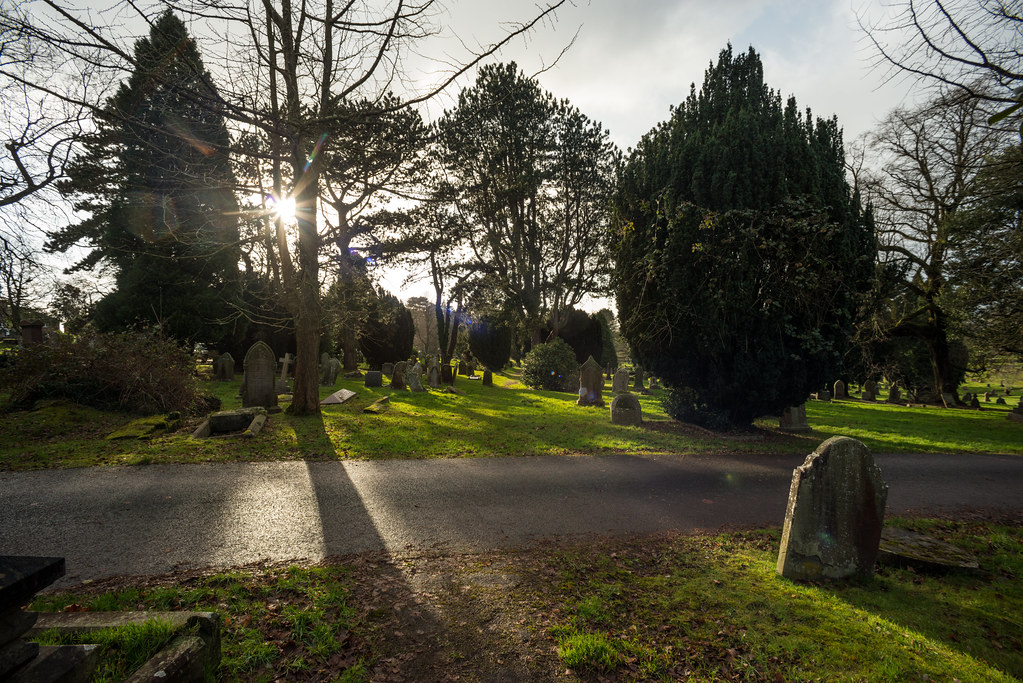 IMG_6841 by --Kei--, on Flickr IMG_6841 by --Kei--, on Flickr
Some samples from film:
Velvia 100
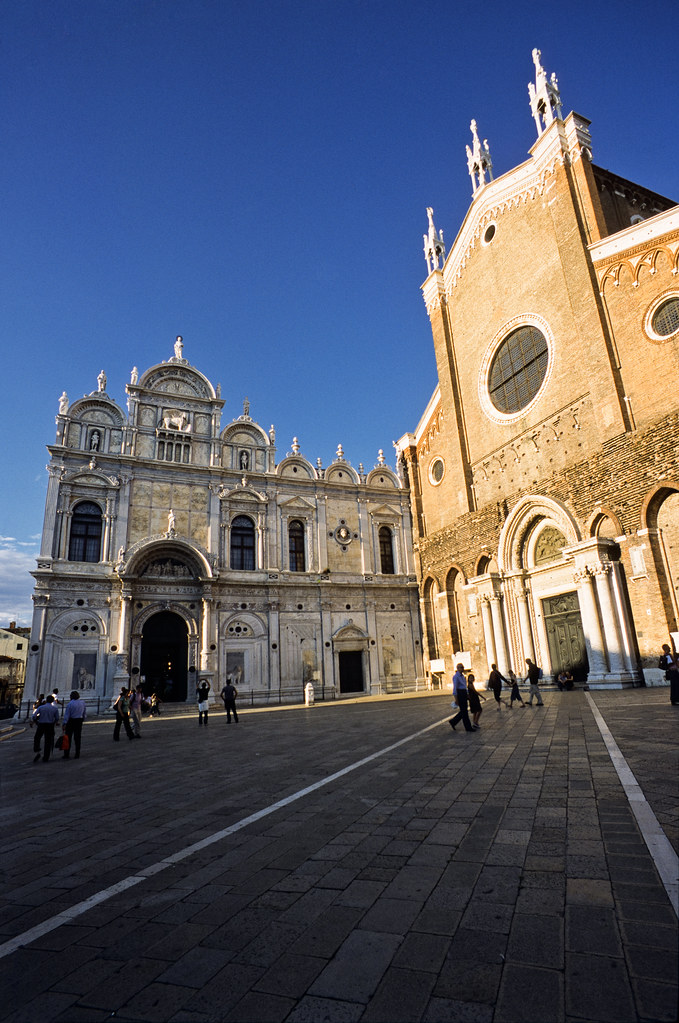 Venice7 by --Kei--, on Flickr Venice7 by --Kei--, on Flickr
Fujicolor Pro 400H (bottom right is a person)
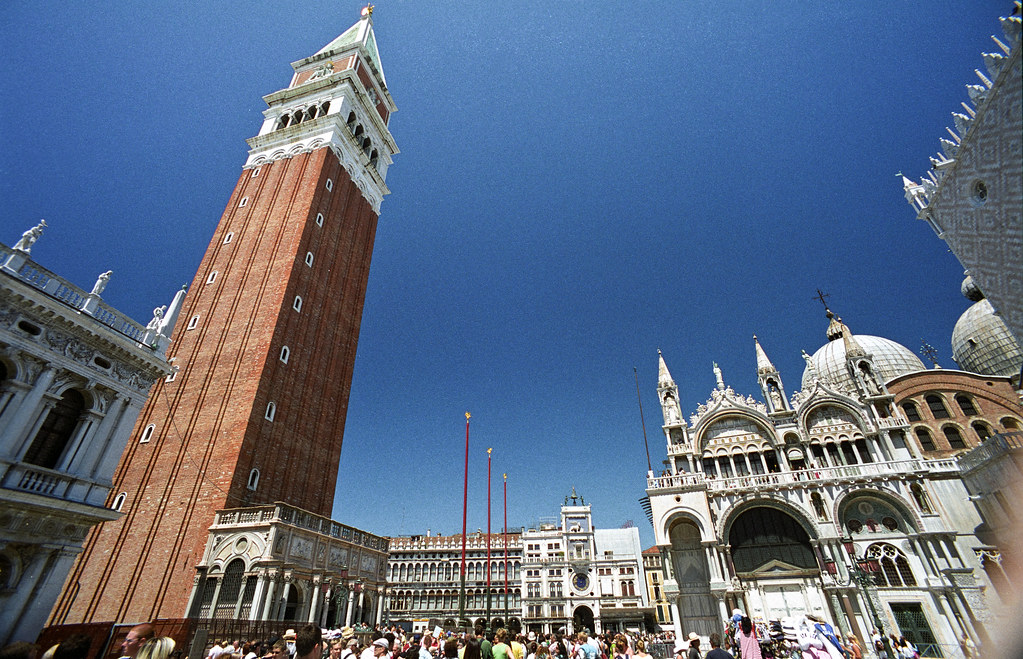 VeniceStMarks- by --Kei--, on Flickr VeniceStMarks- by --Kei--, on Flickr
_________________
Contax Zeiss Distagon 35mm f1.4, Zeiss Planar 85mm f1.4, Zeiss Vario-sonnar 35-70mm f3.4
Mamiya RB/RZ67 RZ67 Pro II, 65mm f4 L-A, 75mm f4.5 Shift, 127mm f3.5 K/L
Mamiya m645 645 1000S, 645J, 645AFD M 35mm f3.5 C, 55mm f2.8 AF, 80mm f1.9 N, 80mm f2.8 C, 120mm f4 macro, 150mm f2.8 A, 210mm f4 ULD, 210mm f4 C
Tamron Primes 17mm f3.5, 24mm f2.5, 90mm f2.8, 135mm f2.5, 180mm f2.5, 300mm f5.6
Tamron Zooms 24-48mm f3.5-3.8, 28-80 f3.5-4.2, 35-80 f2.8-3.8, 70-210mm f3.5, 75-250mm f3.5-5.6
Olympus OM Zuiko 24mm f2.8, Zuiko 28mm f2.8, Zuiko 50mm f1.8, Sigma 600mm f8
Nikon MF 24mm f2.8 N.C, 28mm f2 AI-s, 35mm f1.4 AI-s, 50mm f1.2 AI-s, 50mm f1.8 AI-s, 135mm f2.8 AI, 300mm f2.8 AI-s
Nikon AF F5, D810 16mm f2.8 AF-D, 20mm f1.8 AF-S, 55mm f2.8 AF micro, Tokina 100mm f2.8 macro, 80-200mm f2.8 AF-D
Canon FD T90, T50, AT-1, 50mm f1.8, 135mm f3.5
|
|
| Back to top |
|
 |
cooltouch


Joined: 15 Jan 2009
Posts: 9097
Location: Houston, Texas
|
 Posted: Fri Jan 30, 2015 1:49 am Post subject: Posted: Fri Jan 30, 2015 1:49 am Post subject: |
 |
|
cooltouch wrote:
Thanks for the examples, guys. They're actually a big help. Interesting that it seems y'all prefer using these lenses with film cameras. Well, that's fine with me cuz I have several film cameras that are new to my stable that need to be tested out anyway. This should be fun!
Oh, a question for you all who shoot a lot of B&W. What's a reasonably priced fine grain B&W film these days? About all I've ever used has been Tri-X and Plus X Pan.
_________________
Michael
My Gear List: http://michaelmcbroom.com/photo/gear.html
My Gallery: http://michaelmcbroom.com/gallery3/index.php/
My Flickr Page: https://www.flickr.com/photos/11308754@N08/albums
My Music: https://soundcloud.com/michaelmcbroom/albums
My Blog: http://michaelmcbroom.com/blogistan/ |
|
| Back to top |
|
 |
Abbazz


Joined: 23 Jun 2007
Posts: 1098
Location: Jakarta
|
 Posted: Fri Jan 30, 2015 3:58 am Post subject: Posted: Fri Jan 30, 2015 3:58 am Post subject: |
 |
|
Abbazz wrote:
| cooltouch wrote: |
| Oh, a question for you all who shoot a lot of B&W. What's a reasonably priced fine grain B&W film these days? About all I've ever used has been Tri-X and Plus X Pan. |
I was using Efke KB 25, which I loved al lot despite its many quirks, but the film doesn't seem to be produced anymore. For very fine grain, I have heard good things about Rollei RPX 25 (ISO 25). Ilford PAN F (ISO 50) is good too:
http://www.freestylephoto.biz/category/2-Film/Black-and-White-Film?attr[]=2-9&attr[]=2-59
Cheers!
Abbazz
_________________
Il n'y a rien dans le monde qui n'ait son moment decisif, et le chef-d'oeuvre de la bonne conduite est de connaitre et de prendre ce moment. - Cardinal de Retz
The 6x9 Photography Online Resource:
http://artbig.com/ |
|
| Back to top |
|
 |
TrueLoveOne


Joined: 30 Sep 2012
Posts: 1840
Location: Netherlands
Expire: 2013-12-24
|
 Posted: Fri Jan 30, 2015 7:05 am Post subject: Posted: Fri Jan 30, 2015 7:05 am Post subject: |
 |
|
TrueLoveOne wrote:
I have never had the Tamron, but always enjoyed the Tokina 17 on digital as well as film, i'm a great fan of this lens!
Here's an example on the Canon 5D:
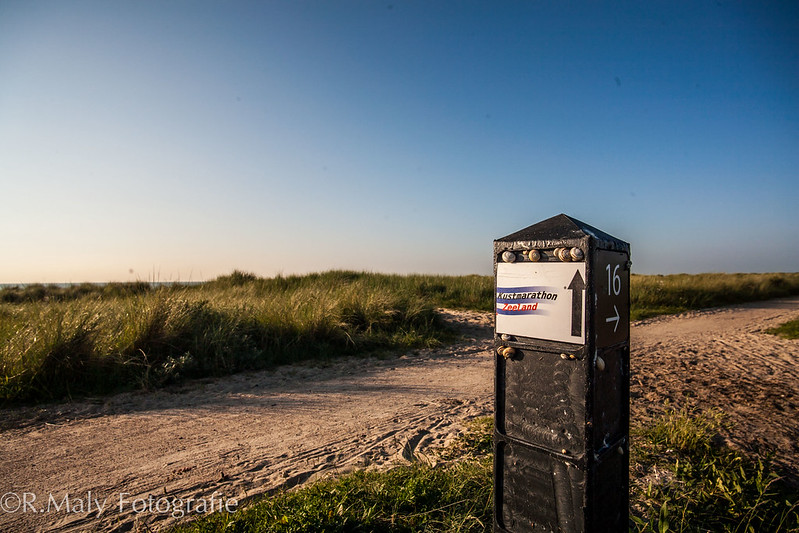 Kustmarathon Zeeland by Ren� Maly, on Flickr Kustmarathon Zeeland by Ren� Maly, on Flickr
And one on Sony NEX3:
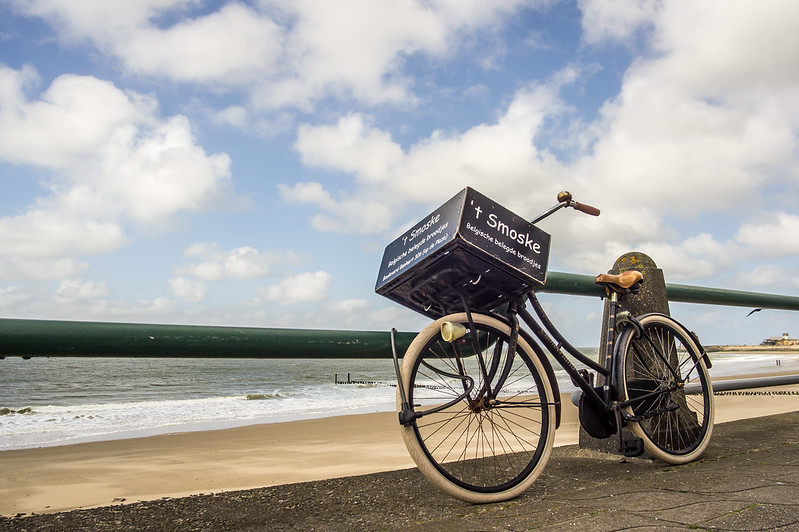 Delivery! by Ren� Maly, on Flickr Delivery! by Ren� Maly, on Flickr
And one on Kodak film:
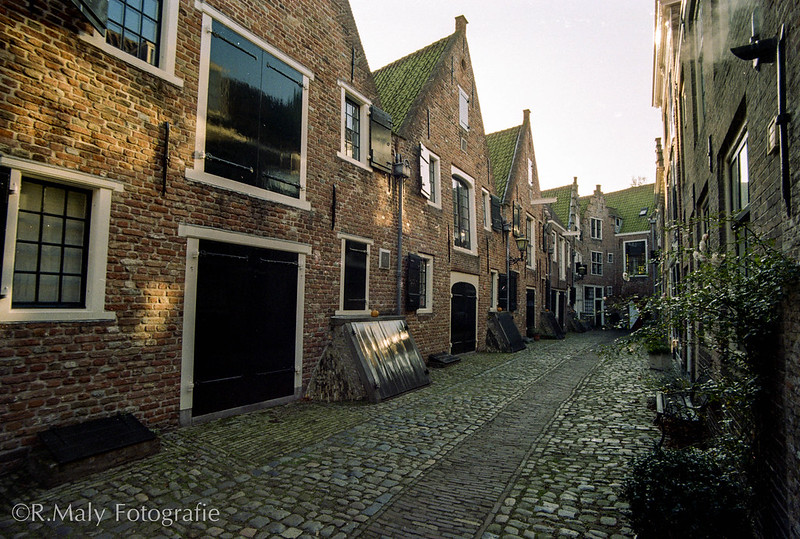 Kuiperspoort Middelburg by Ren� Maly, on Flickr Kuiperspoort Middelburg by Ren� Maly, on Flickr
_________________
My Flickr photostream: http://www.flickr.com/photos/chantalrene/
Sony A7, Canon 5D mkII, Minolta 7D + RD3000 and some more.....
Minolta and Konica collector.... slowly selling all the other stuff! |
|
| Back to top |
|
 |
cooltouch


Joined: 15 Jan 2009
Posts: 9097
Location: Houston, Texas
|
 Posted: Fri Jan 30, 2015 3:05 pm Post subject: Posted: Fri Jan 30, 2015 3:05 pm Post subject: |
 |
|
cooltouch wrote:
Well, Ren�, the Tokina appears to be well behaved with your cameras. I note the decent sharpness on the far right edge of the shot with your NEX 3. Perhaps the 3's sensor doesn't act so poorly to the angle of the light at the edges as the 7's sensor does.
Hey Abbazz, OK, I'll keep an eye out for Ilford Pan F. Last night I was going through my stash of frozen film and realized with some dismay that I'm down to my last roll of Plus-X Pan (ISO 125). I also discovered some ISO 125 Ilford. FP4, one roll of it. I have no idea how old it is, but on the side of the container it reads "ASA 125" and not ISO. I'll wager it's similar to the Plus X, given that Plus X is also ISO 125.
Thanks for the Freestyle link. I visit them on a regular basis, always interested in seeing what's new.
I have probably a dozen rolls, at least five still in boxes, of 36 exp Fuji Neopan ISO 1600 Professional. It's been in my freezers since about 1992 or so and was kept frozen (or so I was told) before I owned it. Purchased at WalMart for $3.95 a roll, no date on the WalMart price stickers or expiration date on the boxes the way Kodak always has. I'm thinking it's probably pretty grainy stuff, but it might be fun to use, especially in low light scenarios. I've never used any of it because I don't often find myself in such low-light scenarios where I'm thinking of photographing them.
After doing some googling, I noticed with some dismay that Fuji's film offerings are continuing to dwindle, especially in importance. Fuji's USA website shows only three color films, its international site shows four plus four chrome emulsions, and neither site shows any B&W anymore. I had to google it to find a link at Fuji for any B&W emulsions and they are down to one now -- Neopan 100. I guess they discontinued 400 when they discontinued Provia 400. Honestly I wonder how much longer it's gonna be before the company changes its name from Fujifilm to just plain Fuji. It seems silly to be named after film products when they are now such a small part of the corporate makeup.
These days anymore, I have a digital darkroom or hybrid darkroom, if you will. Actually the term "darkroom" is misleading because I don't have one. I have a changing bag and that's the extent of anything dark that I use except for my developing tanks. I scan my film and slides and print them out on photo paper on my printer.
_________________
Michael
My Gear List: http://michaelmcbroom.com/photo/gear.html
My Gallery: http://michaelmcbroom.com/gallery3/index.php/
My Flickr Page: https://www.flickr.com/photos/11308754@N08/albums
My Music: https://soundcloud.com/michaelmcbroom/albums
My Blog: http://michaelmcbroom.com/blogistan/ |
|
| Back to top |
|
 |
|
|
